PEST DIRECTORY
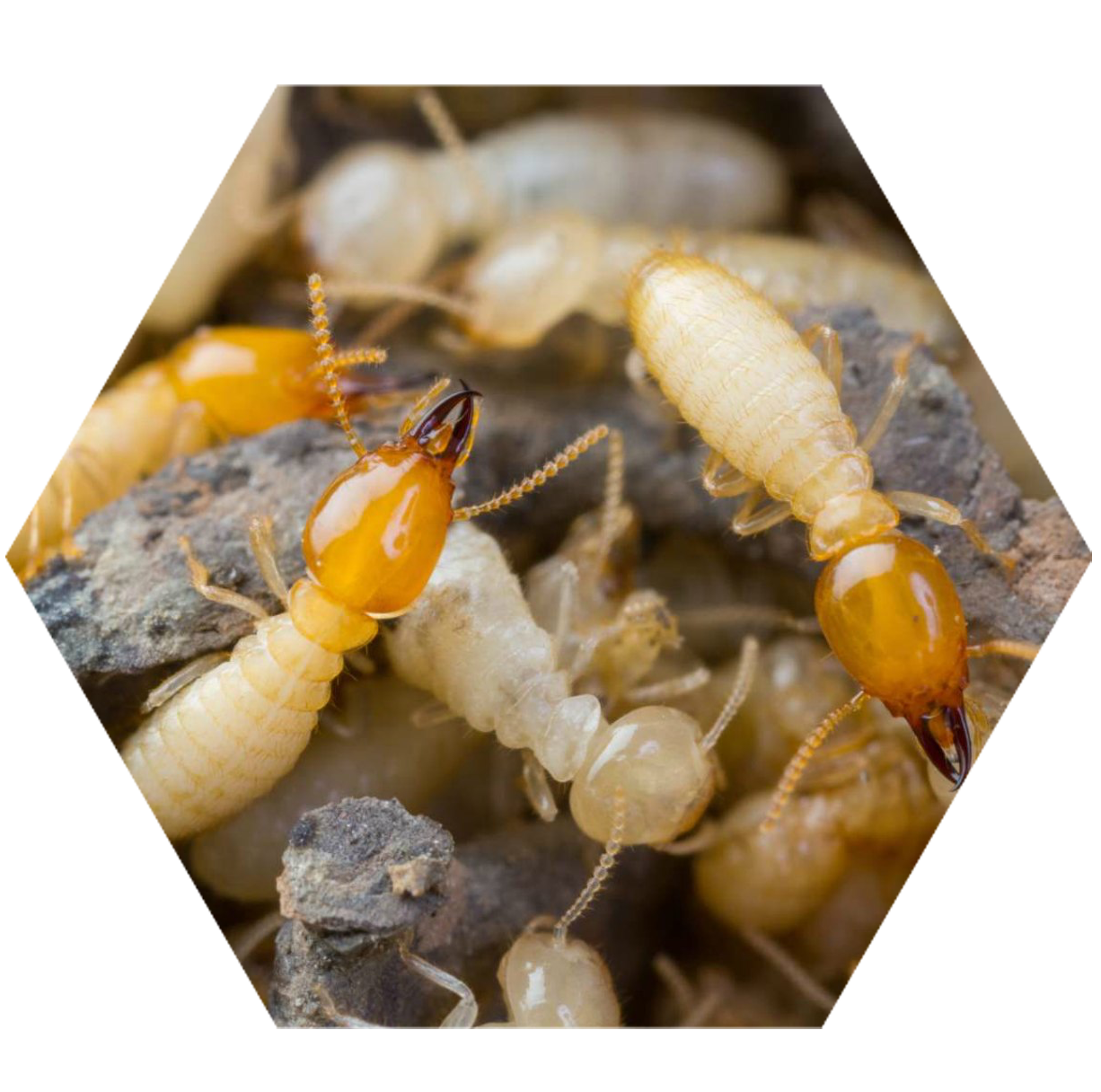
TERMITES
Termites are wood-destroying insects that feed on the cellulose found in wood and other organic matter. They have a special enzyme in their gut, which turns cellulose into usable sugar. Subterranean termites live and work together in large groups attacking decaying or water-damaged wood.
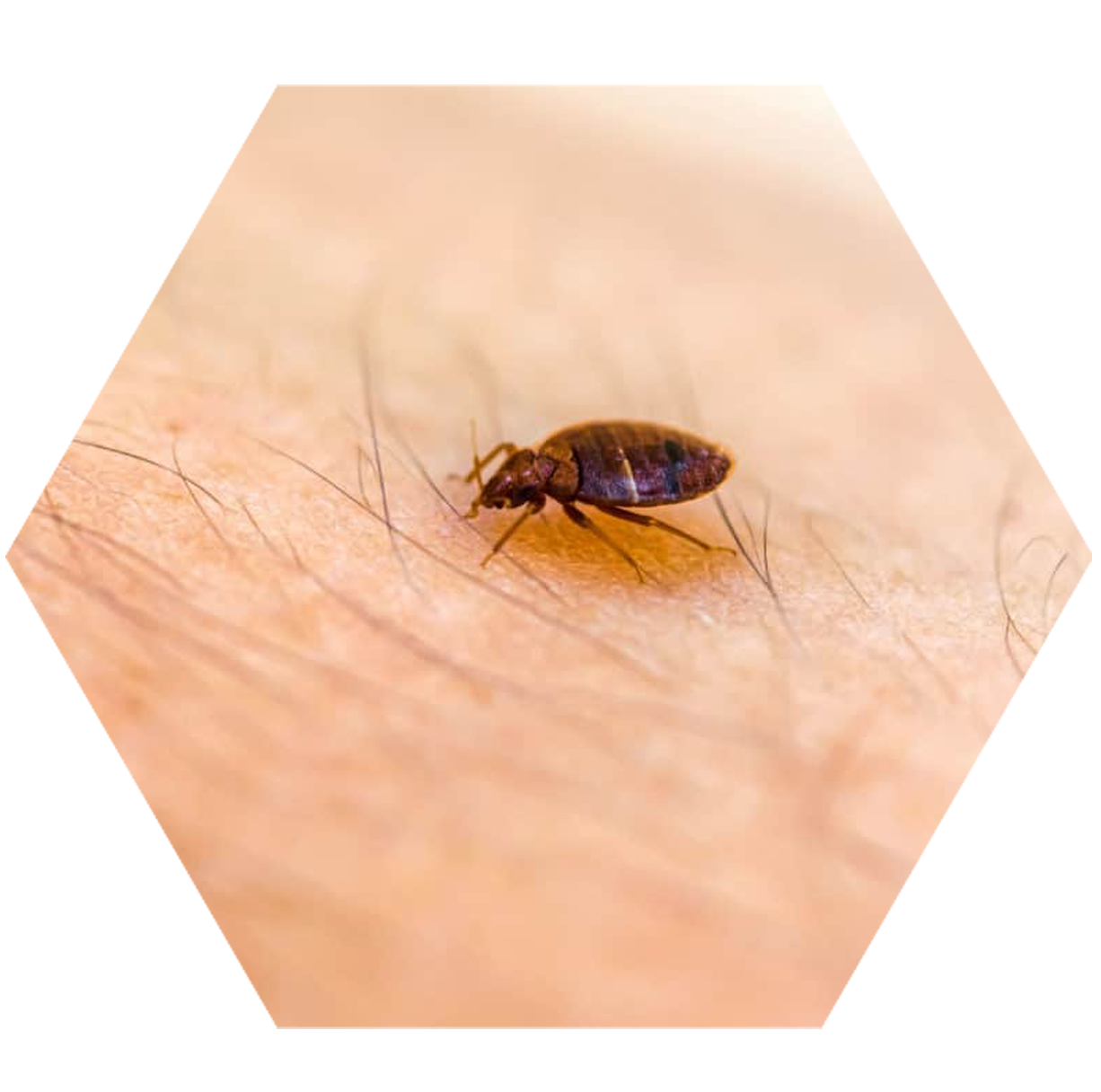
BED BUGS
Bed bugs are parasitic pests that feed on the blood of mammals as their sole source of food, with people being their favorite hosts. Bed bugs are a pest that no person wants to discover inside their home. However, keeping bed bugs out of our homes and businesses is easier said than done.
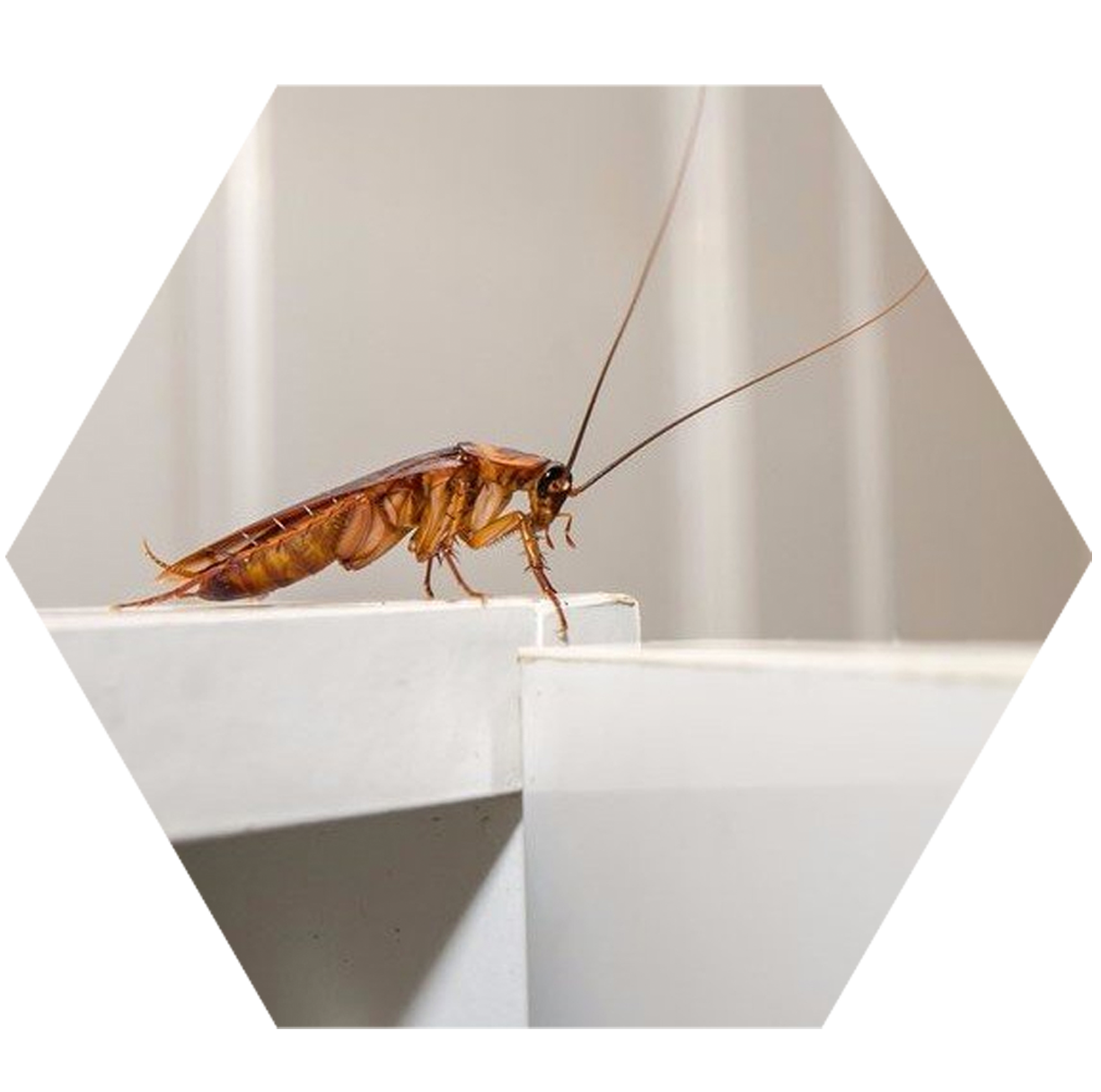
COCKROACHES
Cockroaches are known for being one of the most adaptable creatures living in the world and are difficult pests to control. Those species that have adapted to living near people are dangerous and unwelcome pests. Cockroaches have an oval-shaped body and six legs covered in spines.
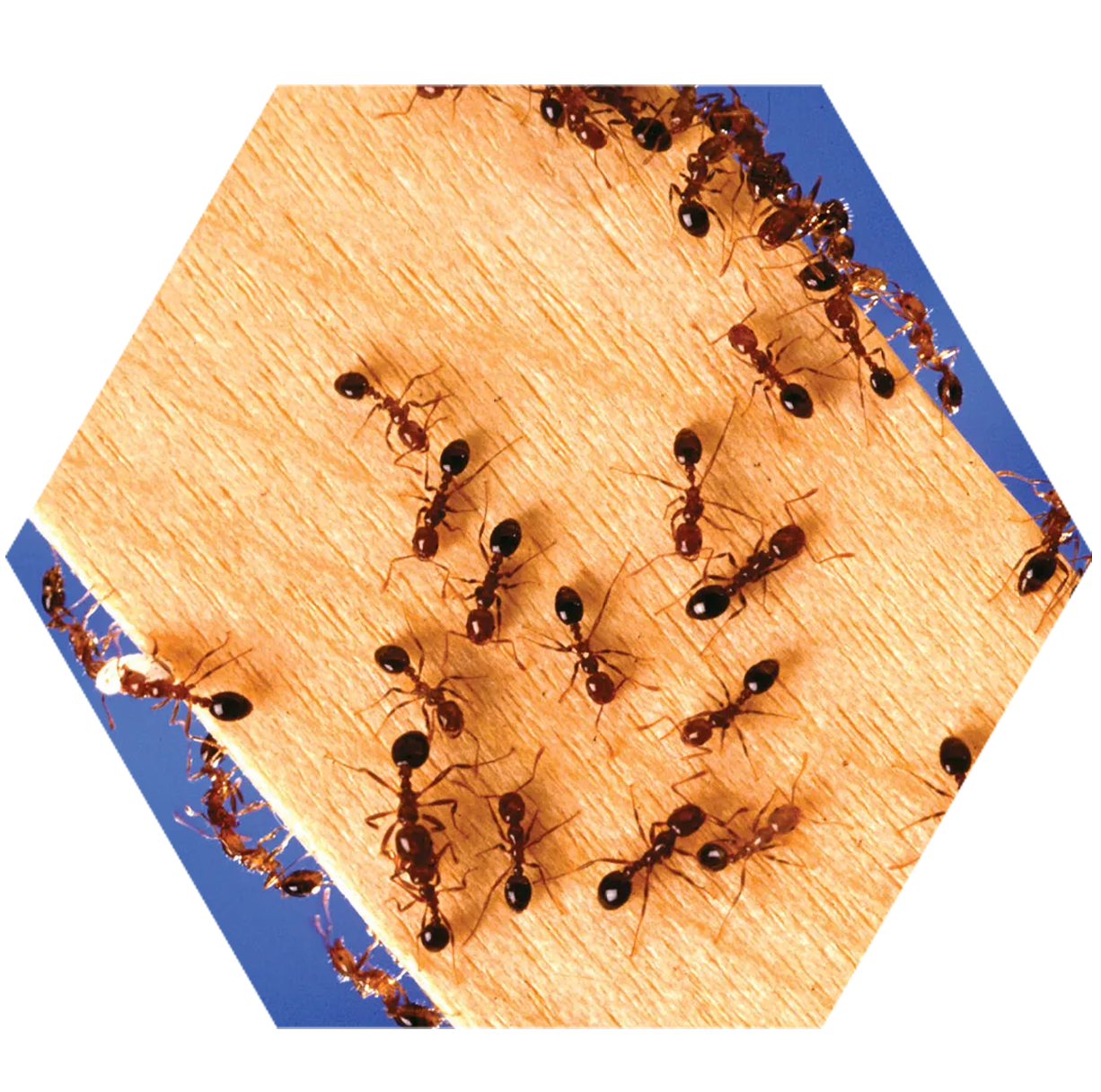
ANTS
Being common pests that find their way into Ohio homes, ants are a pest that no one wants as a houseguest. They are social insects, living, working, and traveling together in large groups. All adult ants have six legs, three body regions, antennae, and strong, chewing mouthparts.
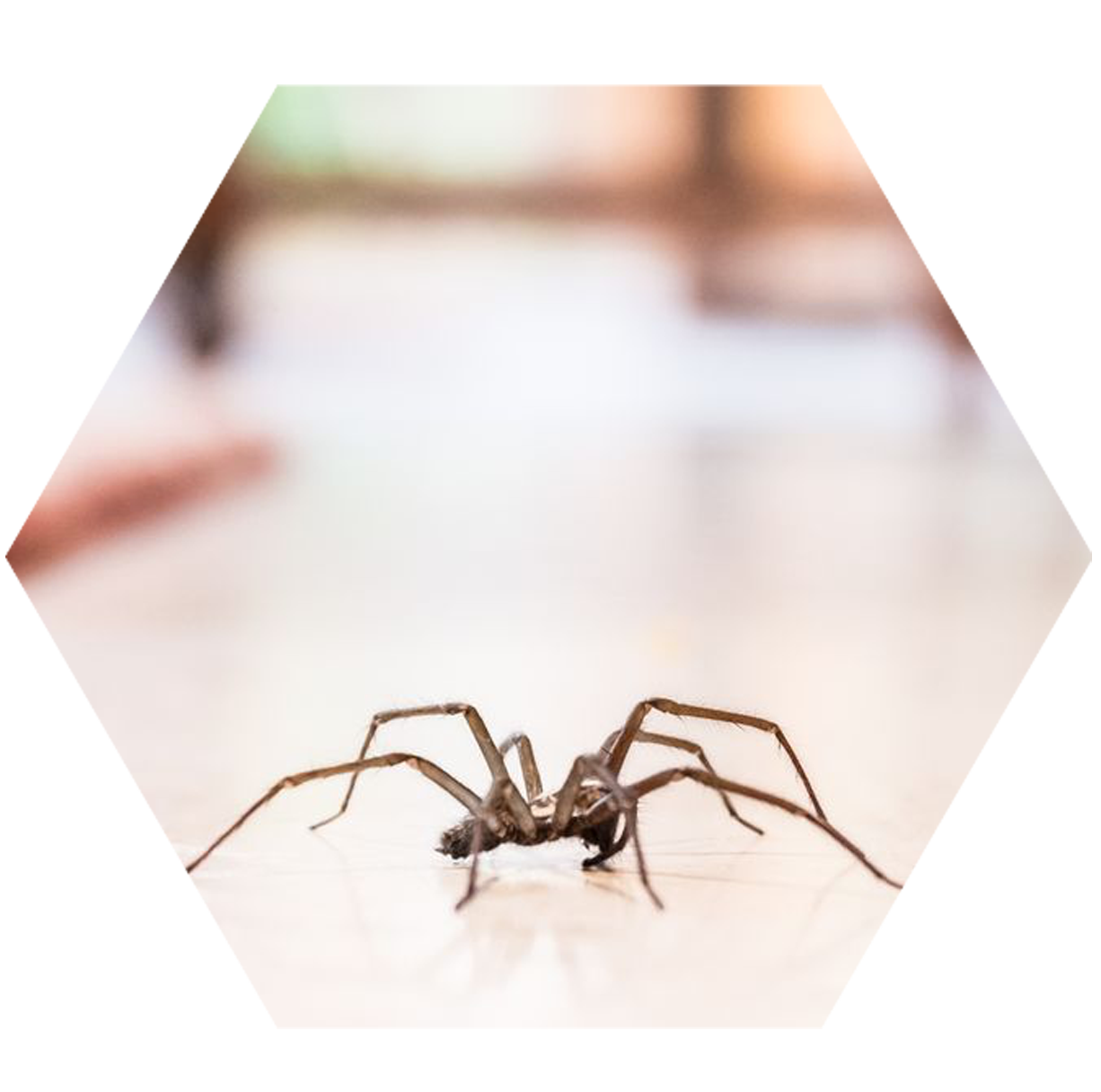
SPIDERS
Spiders belong to the arachnid group, and you can find them worldwide. With more than 3,000 species living in North American, spiders can become a significant pest problem in both homes and businesses. Spiders have two body segments, eight legs, are wingless, lack antennae, and cannot chew.
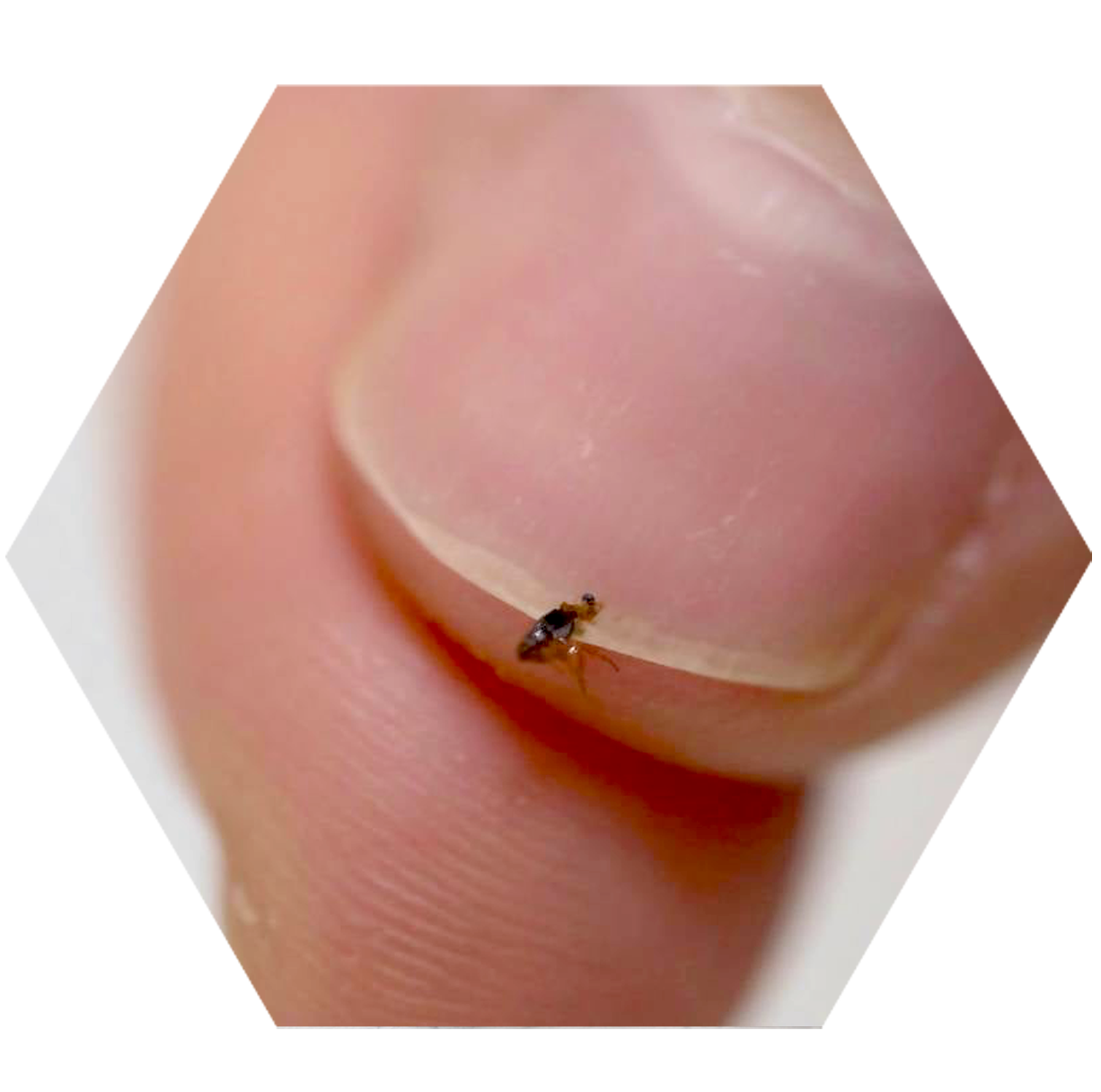
FLEAS
Fleas are a type of external parasite that feeds on the blood of people and animals. They are a pest that no one wants to discover on their property. Fleas are voracious eaters and consume more than 15 times their own body weight each day. Adult fleas have 6 legs, antennae and are wingless.
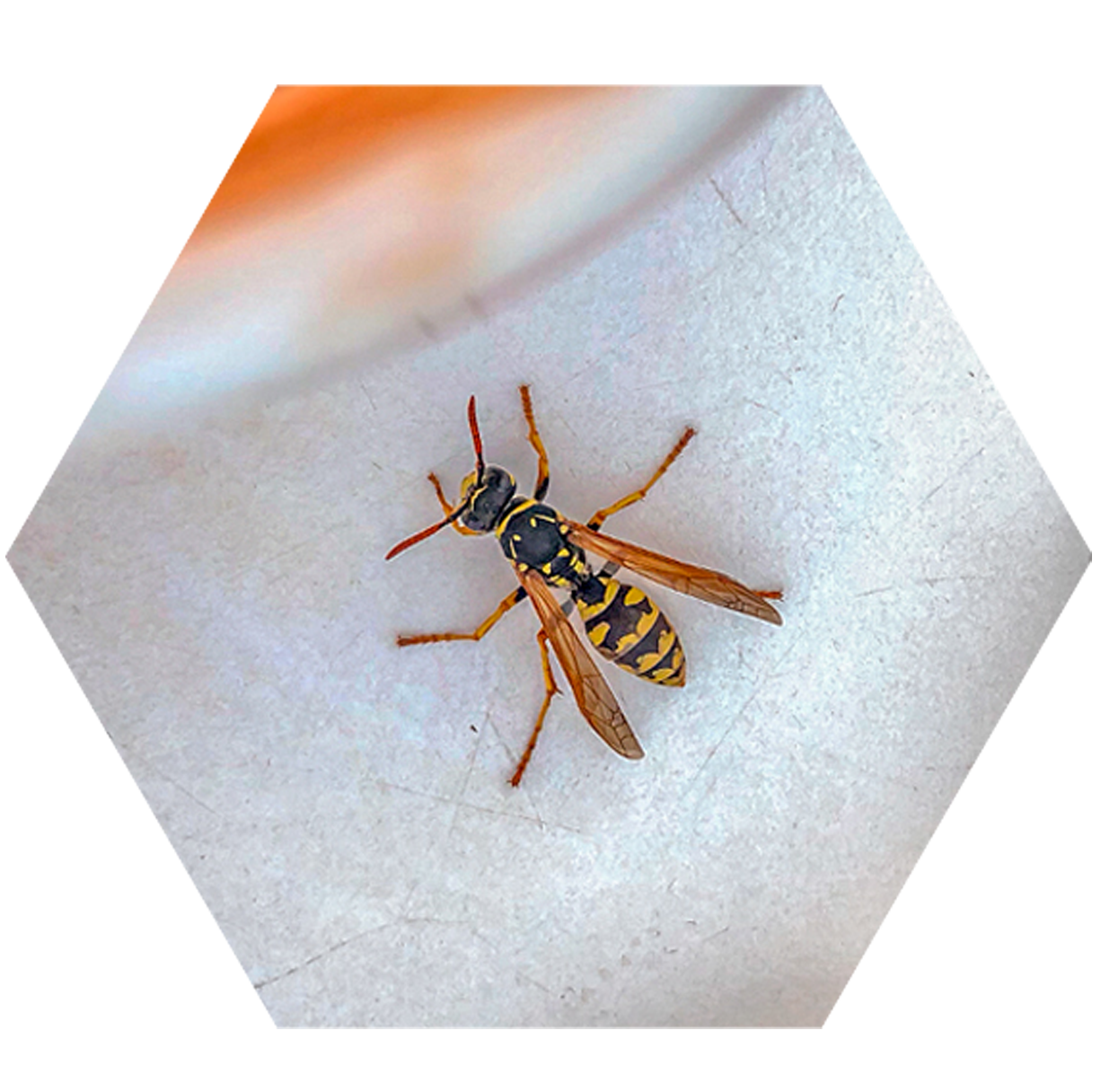
STINGING INSECTS
Stinging insects use their stingers to defend themselves from danger and are pests that you should always avoid. When living outside in environments that are not near people, stinging insects are important to the ecosystem, pollinating plants, flowers, and crops.

TICKS
While many think of ticks as insects, they are actually related to spiders. Adults have eight legs, no wings, and an oval-shaped body. Ticks do not jump or fly, so they move from place to place on the backs of their animal hosts or the clothing or skin of people.
Termites
What are termites?
Termites are wood-destroying insects that feed on the cellulose found in wood and other organic matter. They have a special enzyme in their gut, which turns cellulose into usable sugar. Subterranean termites live and work together in large groups attacking decaying or water-damaged wood.
Eastern subterranean termites are one of the most widespread species of termites living throughout much of the country, including Ohio. Eastern subterranean termites create nests under the ground, moving back and forth from their nest to a food source each day. Termites don’t require sleep and actively feed on wood 24/7 throughout the entire year. Eastern subterranean termites divide their colonies into different “castes” or groups (workers, soldiers, and reproductives), with each caste having its own set of responsibilities.
Are termites dangerous?
Termites are dangerous because they cause significant damage to the structures they invade. Because they can work for months or even years without being noticed, termites are a nightmare for homeowners. In most cases, they have already caused costly damage by the time you find them. And, to make matters worse, most homeowners insurance does not cover the repairs.
Why do I have a termite problem?
Like any pest, termites are on your property or in your home because it’s offering them food. They move inside through small cracks they find in the foundation or through wooden structures making direct contact with the soil. Once inside, if they discover water-damaged wood, insulation, or other materials made of cellulose, they will gather it to feed their colony.
Where do I find termites?
Except for the reproductive termites that emerge from the nest each spring to mate, people rarely see or come into contact with termites. Termites feed on structural wood that is at ground level; however, as an infestation grows, they begin to attack wood beams and structures located above ceilings. Termites first attack pieces of wood that have been damaged by water located around pipes.
How Do I Get Rid Of Termites?
Get rid of termites from your Central Indiana home or business by trusting the experts at Total Exterminating. We are a locally-owned and family-operated company. Our goal is to provide all our customers with peace of mind and pest-free homes. Learn more about protecting your Indianapolis or Central Indiana home or business from termites and other pests with the help of Total Exterminating Pest Management. To find out about our eco-friendly approach to pest management, call today, and speak with one of our helpful professionals!
Bed Bugs
What are bed bugs?
Bed bugs are parasitic pests that feed on the blood of mammals as their sole source of food, with people being their favorite hosts. Bed bugs are a pest that no person wants to discover inside their home. However, keeping bed bugs out of our homes and businesses is easier said than done.
Adult bed bugs are about 1/4 of an inch long and are reddish-brown. They are wingless and do not jump. They move from place to place by crawling onto people or our belongings. They also move through walls and floors, making them a tricky pest to control in multi-unit buildings. Immature bed bugs (nymphs) look like adults, but are smaller and are a yellowish color until they start feeding. After feeding they turn bright red and become much easier to spot.
Are bed bugs dangerous?
Bed bugs are currently not thought to be a considerable health threat, although they can carry and transmit some disease-causing pathogens. These biting bugs are nuisance pests that should never live in our homes. To feed, bed bugs bite, and their bites produce a red, itchy rash in many people. Also, no one can sleep soundly while knowing bed bugs are living in their house and using them as a source of food. They are also a damaging pest. Bed bugs stain bedding, upholstered furniture, rugs, and walls with excrement and drops of blood.
Why do I have a bed bug problem?
While many people believe that bed bugs are associated with filth, the truth is that bed bugs can live in any home or business. Bed bugs are not drawn to filth, but rather to a place that allows them access to food. Clutter indeed allows bed bugs to hide out of sight and may allow an infestation to go undetected for a longer period.
People can come into contact with bed bugs in many places, from a friend’s house to the airport and any place in between. Bed bugs are hitchhikers and move to new locations on people or their belongings. They also get into homes on things like used mattresses, box springs, and upholstered furniture.
Where will I find bed bugs?
Despite their name, bed bugs live in a variety of locations, not just in our bedrooms. Bed bugs are mostly active at night, emerging from their daytime hiding spots, which are usually close to sleeping areas where they feed. If an infestation goes unnoticed, bed bugs will increase in number and move throughout a home, invading multiple areas. Besides the seams of mattresses and box springs, bed bugs hide behind baseboards and wall hangings, in upholstered furniture and behind outlets, inside of electronics, and under piles of dirty laundry.
How Do I Get Rid Of Bed Bugs?
Get rid of bed bugs from your Central Indiana home or business by trusting the experts at Total Exterminating. We are a locally-owned and family-operated company. Our goal is to provide all our customers with peace of mind and pest-free homes. Learn more about protecting your Indianapolis or Central Indiana home or business from bed bugs and other pests with the help of Total Exterminating Pest Management. To find out about our eco-friendly approach to pest management, call today, and speak with one of our helpful professionals!
Cockroaches
What are cockroaches?
Cockroaches are known for being one of the most adaptable creatures living throughout the world and are difficult pests to control. Those species that have adapted to living near people are dangerous and unwelcome pests.
Cockroaches have a flattened, oval-shaped body and six legs covered in spines. Their long antennae are usually the same length or longer than their body, and some species have fully developed wings and are capable of flight. Whether winged or not, cockroaches are not known as great fliers. Most species of roaches avoid light and scurry into the darkness when lights turn on. Cockroaches come in various colors, including black, mahogany, and brown, with a variety of identifying markings.
Some of the most common roaches living throughout Greater Columbus and Central Ohio include German cockroaches, oriental cockroaches, American cockroaches, and brown-banded cockroaches.
Are cockroaches dangerous?
Cockroaches are dangerous and damaging pests. They carry on their body and legs a wide number of bacteria, human pathogens, and parasites and contaminate food, utensils, dishes, and the surfaces of homes that they crawl over. They transmit E. coli and salmonella, and other pathogens that make people ill. Also, their shed skins and excrement aggravate allergies and trigger asthma attacks — especially in young children. Cockroaches are scavengers that feed on and damage many non-food items like books, clothing, furniture, toothpaste, and wallpaper.
Why do I have a cockroach problem?
You have a cockroach problem because cockroaches have discovered sources of food on your property. Things like trash cans, compost piles, pet food, and outdoor eating areas can attract cockroaches to your yard. Once in your yard, they will likely find their way into your house while foraging for more food. Things like spills, crumbs, and dirty dishes act as food sources for hungry cockroaches.
People also introduce cockroaches indoors on potted plants, delivery boxes, or used appliances or electronics that harbor these pests.
Where will I find cockroaches?
Where cockroaches prefer to live depends on their species, as shown below:
German Cockroaches
German cockroaches like to live inside. They are a significant pest concern in homes, restaurants, grocery stores, and food is prepared or stored anywhere else. These roaches prefer warm, humid environments, and you’ll often find them in kitchens and bathrooms.
Oriental Cockroaches
Oriental cockroaches are sometimes called “water bugs” because they prefer to live in very damp areas. Outside, they live around sewers and under piles of debris. Inside, these roaches hide in basements, crawl spaces, and bathrooms around toilets and bathtub drains.
American Cockroaches
American cockroaches mainly live outside but do move indoors while foraging for food. Outside, they live around sewers and drains. They also live in flower beds, under mulch, and behind tree bark. Inside, these moisture-loving pests hide in warm, dark areas in kitchens, basements, bathrooms, and crawl spaces.
Brown-Banded Cockroaches
Brown-banded cockroaches prefer to live in dry locations that are very warm — above 80 degrees. Inside, these cockroaches live under furniture and in the upper parts of the kitchen or bathroom cabinets. They also invade electronics.
How Do I Get Rid Of Cockroaches?
Get rid of cockroaches from your Central Indiana home or business by trusting the experts at Total Exterminating. We are a locally-owned and family-operated company. Our goal is to provide all our customers with peace of mind and pest-free homes. Learn more about protecting your Indianapolis or Central Indiana home or business from cockroaches and other pests with the help of Total Exterminating Pest Management. To find out about our eco-friendly approach to pest management, call today, and speak with one of our helpful professionals!
Ants
What are ants?
Being common pests that find their way into Ohio homes, ants are a pest that no one wants as a houseguest. They are social insects, living, working, and traveling together in large groups. All adult ants have six legs, three body regions, antennae, and strong, chewing mouthparts. Only the reproductive members of an ant colony have wings and are usually only seen in the spring when they emerge from their colony to find a mate and create a new nest and colony. Some of the most common ants living throughout Greater Columbus and Central Ohio include pavement ants, odorous house ants, Pharaoh ants, and carpenter ants.
Are ants dangerous?
Ants can be dangerous, depending on their species. The carpenter ant is a dangerous species because of the significant and costly structural damage they cause inside the wooden structures they choose to nest. The pharaoh ant is another species of dangerous ant. They spread dangerous diseases and seek moisture inside IV lines and patients’ wounds in hospitals and other healthcare facilities.
The good news is that most species of ants that we encounter and invade our homes are nuisance species and pose no significant health threats to people or property. However, it is important to understand that all species of ants can contaminate food and surfaces with bacteria and parasites that they carry on the body and legs.
Why do I have an ant problem?
Food attracts ants to properties. If there are food sources around your home, there is a high likelihood that ants will find their way onto your property. Trash, compost, and pet food are common sources of food for ants. They will also forage for food in gardens and outdoor eating areas. While searching for food or trying to escape harsh weather, they will often find their way inside through cracks and crevices in a home’s foundation or exterior walls.
Where will I find ants?
Where ants decide to nest depends on their species. Each species has its own preferences, which are listed below:
Pavement Ants
As their name states, pavement ants like to place their nests in the soil next to foundations, in the crack of pavement and sidewalks, and along fence lines. Inside they like to nest in masonry walls, behind wall voids, inside insulation, and under floors.
Odorous House Ants
Odorous house ants nest outside in areas of moist exposed soil, under fallen trees, or in stacks of firewood. Inside they like to nest near sources of moisture — behind walls near hot water pipes, leaky pipes, or in wood that termites have previously damaged.
Pharaoh Ants
Pharaoh ants prefer to nest inside. They are a common problem inside homes, hospitals, nursing homes, grocery stores, and food processing facilities. They place their nests in warm, humid areas behind walls, baseboards, and under floors and travel through buildings using wires and pipes.
Carpenter Ants
Carpenter ants prefer to nest in wood that has been previously damaged by water. Outside they nest in tree stumps, fallen trees, woodpiles, and old fences. Inside they nest inside of water-damaged structural wood behind walls and under floors.
How do I get rid of ants?
Get rid of ants from your Ohio home or business by trusting 1st Response Pest Management experts. We are a locally-owned and family-operated pest control company. Our goal is to provide all our customers with peace of mind and pest-free homes and businesses through effective residential and commercial pest control services.
Learn more about protecting your Greater Columbus or Central Ohio area home or business from ants and other pests with the help of 1st Response Pest Management and our eco-friendly approach to pest management. Reach out today and speak with one of our helpful professionals!
How Do I Get Rid Of Ants?
Get rid of ants from your Central Indiana home or business by trusting the experts at Total Exterminating. We are a locally-owned and family-operated company. Our goal is to provide all our customers with peace of mind and pest-free homes. Learn more about protecting your Indianapolis or Central Indiana home or business from ants and other pests with the help of Total Exterminating Pest Management. To find out about our eco-friendly approach to pest management, call today, and speak with one of our helpful professionals!
Spiders
What are spiders?
Spiders belong to the arachnid group, and you can find them worldwide. With more than 3,000 species living in North American, spiders can become a significant pest problem in both homes and businesses. Spiders, like all arachnids, have two body segments, eight legs, are wingless, lack antennae, and cannot chew. Spiders are predators and feed on various nuisance insects like flies, moths, and other spiders.
Their feeding habits make them helpful and eco-friendly pests. Despite their helpfulness, no one wants to have large numbers of spiders living in their yard or home. Some of the most common species of spiders that invade properties in our area of Ohio include daddy long legs, wolf spiders, brown recluse spiders, and house spiders.
Are spiders dangerous?
Spiders, depending on their species, can be dangerous to people. Most species, however, are only nuisance pests because there are no significant health risks associated with their bites. Nuisance spiders like wolf spiders and house spiders have venom that is strong enough to subdue their prey but not strong enough to trigger health problems in people. In the case of daddy long legs, they are not “true” spiders, and they lack any venom glands, making them even less of a threat to people!
The brown recluse spider lives in our area and is a dangerous species. If bitten by a brown recluse spider, you will experience an intense burning sensation. Their venom causes symptoms like fever, difficulty sleeping, and ulceration of the tissue around the bite site. The open ulcer is prone to infection and is difficult to heal. If a brown recluse spider ever bites you, you should seek medical attention to treat the symptoms.
Why do I have a spider problem?
Like all creatures, spiders look for properties that offer them plenty of food sources. For spiders, this means areas with high insect activity. Once on your property, they will build their webs or burrows in secluded spots in your yard. While they prefer to live outside, spiders move into homes and other buildings to seek a safe place to lay their eggs or follow the insects they prey on.
Where will I find spiders?
Where exactly spiders live depends on their species, as seen below.
Daddy Long Legs
Daddy long legs place their loose irregular-shaped webs in homes, barns, sheds, and other outbuildings. They construct their webs in areas with high humidity like the corners of eaves or basements, in crawl spaces, or around the corners in bathrooms.
Wolf Spiders
Wolf spiders are not web-building spiders; instead, they burrow in the ground, and therefore whether living inside or out, stay at ground level. Outside they burrow under rocks, woodpiles, landscape timbers, and fallen trees. Inside, you’ll find them on the floor along walls, under furniture, and in the bottom of closets.
Brown Recluse
Brown recluse spiders like to build their irregular webs in dark, quiet areas. They use their webs as a place to rest, not to catch food. Outside, they place their webs in rock piles, woodpiles, behind window shutters, and under fallen trees. Inside, they build their webs in quiet locations like storage boxes, basements, crawl spaces, and closets.
House Spiders
As their name describes, house spiders often find their way into our homes. Outside, they place their tangled webs under roof eaves, under decks, in dense vegetation, and gardens. Inside, you’ll see their webs pop up daily in places like the corners of rooms, basements, closets, and around windows.
How Do I Get Rid Of Spiders?
Get rid of spiders from your Central Indiana home or business by trusting the experts at Total Exterminating. We are a locally-owned and family-operated company. Our goal is to provide all our customers with peace of mind and pest-free homes. Learn more about protecting your Indianapolis or Central Indiana home or business from spiders and other pests with the help of Total Exterminating Pest Management. To find out about our eco-friendly approach to pest management, call today, and speak with one of our helpful professionals!
Fleas
What Are Fleas?
Fleas are a type of external parasite that feeds on the blood of people and animals. They are a pest that no one wants to discover on their property. Fleas are voracious eaters and consume more than 15 times their own body weight each day. Like many insects, adult fleas have 6 legs, antennae and are wingless. They are a reddish-brown color. When they’re not using their powerful hind legs to jump out of sight, their small size makes people believe they are a fleck of dirt.
Are Fleas Dangerous?
Fleas can spread diseases to both people and animals. However, the spread of disease by fleas is not a huge concern in the United States. A larger worry when it comes to fleas is that they are intermediate hosts for tapeworms. These tapeworms can spread from fleas to both animals and people.
Less dangerous but incredibly irritating, fleas bite both humans and our pets, leaving us itching for days on end. Many people are allergic to their saliva, causing bites to become even more itchy and uncomfortable. Those that are very allergic may develop allergic dermatitis. Bites can also become infected due to excessive itching.
Why Do I Have A Flea Problem?
There are many reasons why fleas become a problem on properties. Whether you own pets or not, fleas have the potential to invade your yard or home.
Any park, campground, athletic field, yard, or other outdoor area has the potential to become infested with fleas. These are common places where both wild animals and pets come and go regularly. Fleas that have found their way onto your clothing or the backs of your pets will find their way into your home.
Fleas also hitchhike their way into homes or businesses inside of things like used furniture or rugs. They may move inside homes on the backs of rodents and other wild animals that have moved inside to nest.
Where Will I Find Fleas?
If you own pets, fleas will spend most of their time on their backs. After mating, their eggs will drop off their host and onto your furniture, rugs, or bedding. Fleas introduced onto your property by wild animals live in areas of shade and damp soil. They are commonly found in tall grass or under shrubs, leaf piles, and decks.
How Do I Get Rid Of Fleas?
Get rid of fleas from your Central Indiana home or business by trusting the experts at Total Exterminating. We are a locally-owned and family-operated company. Our goal is to provide all our customers with peace of mind and pest-free homes. Learn more about protecting your Indianapolis or Central Indiana home or business from fleas and other pests with the help of Total Exterminating Pest Management. To find out about our eco-friendly approach to pest management, call today, and speak with one of our helpful professionals!
Stinging Insects
What are stinging insects?
Stinging insects use their stingers to defend themselves from danger and are pests that you should always avoid. When living outside in environments that are not near people, stinging insects are important to the ecosystem, pollinating plants, flowers, and crops. Those species that are predatory help to keep populations of nuisance insects under control. However, when stinging insects nest near people, they become unwanted pests. Yellow jackets, bald-faced hornets, inground digger wasps, mud daubers, and carpenter bees are stinging insects that live in our area of Ohio.
Are stinging insects dangerous?
The venom that stinging insects possess is strong enough to trigger health problems in people. In the case of an attack by multiple stinging insects or in people that are severely allergic to their venom, anaphylaxis may occur. In addition to their venom, their stings are painful and may leave behind long-lasting welts.
Why do I have a stinging insect problem?
Stinging insects are outdoor pests, meaning they may place their nests in any yard or other outdoor space. These insects forage for food in gardens, yards, wooded areas, and around ponds and lakes. They also look for food in our outdoor eating areas, trash cans, and compost bins.
Where will I find stinging insects?
Where stinging insects prefer to build their nests depends on their species. They are either aerial or ground nesters.
Yellow Jackets
Yellow jackets place their nests in the ground — under woodpiles, fallen trees, in tree stumps, and the ground nests of other small animals.
Bald-Faced Hornets
Bald-faced hornets build paper nests and place them up off the ground. Common nesting sites include trees, utility poles, under roof eaves, chimneys, and decks.
Inground Digger Wasps
Inground digger wasps place their nests in the ground, preferably in dry dirt in areas of direct sunlight.
Mud Daubers
Mud daubers construct their nests out of mud and connect many short mud tubes. They like to place their nests in sheltered areas. Popular nesting sites include areas under eaves, in barns, attics, and other outbuildings.
Carpenter Bees
Carpenter bees are solitary nesters. The females build their nests in unpainted, weathered pieces of wood — preferring softwood. Common carpenter bee nesting sites include fences, decks, wooden play structures, outdoor furniture, wood shingles, and roof eaves.
How Do I Get Rid Of Stinging Insects?
Get rid of stinging insects from your Central Indiana home or business by trusting the experts at Total Exterminating. We are a locally-owned and family-operated company. Our goal is to provide all our customers with peace of mind and pest-free homes. Learn more about protecting your Indianapolis or Central Indiana home or business from stinging insects and other pests with the help of Total Exterminating Pest Management. To find out about our eco-friendly approach to pest management, call today, and speak with one of our helpful professionals!
Ticks
What are ticks?
While many think of ticks as insects, they are actually arachnids and are related to spiders. Adults have eight legs, no wings, and an oval-shaped body. A tick’s exact color, appearance, and host preference are species-dependent. Ticks do not jump or fly, so they move from place to place on the backs of their animal hosts or the clothing or skin of people.
Ticks are ectoparasites, which means they feed on the blood of their host (human or animal) by attaching themselves to the outside of the host’s body. They have specialized mouthparts they use to cut into their host’s skin. They then bury themselves into their skin, insert a barbed tube-like structure, and begin to feed on their blood. After feeding, a ticks’ body swells in a balloon-like manner, and they grow in size.
Are ticks dangerous?
Ticks are dangerous pests because they carry many diseases and bacteria that can make people and our pets ill. Diseases that ticks can spread, depending on their species, include Lyme disease, babesiosis, anaplasmosis, tularemia, ehrlichiosis, rickettsiosis, and Rocky Mountain spotted fever.
Why do I have a tick problem?
Ticks get into yards on the backs of traveling and foraging wild animals. When not feeding on a host, ticks thrive in dark, damp areas. Areas of tall grass, thick vegetation, and wooded areas are where ticks live in large populations.
Where will I find ticks?
Ticks, while able to move inside homes on their host’s body, are not indoor pests. Most species are not able to complete their life cycle indoors. Ticks are outdoor pests and therefore challenging to control and problematic in a variety of outdoor environments, including:
The edges of ponds and lakes, Along the edge of wooded trails, Grassy yards, Parks, Athletic fields, Campgrounds, Dog parks.
How Do I Get Rid Of Ticks?
Get rid of ticks from your Central Indiana home or business by trusting the experts at Total Exterminating. We are a locally-owned and family-operated company. Our goal is to provide all our customers with peace of mind and pest-free homes. Learn more about protecting your Indianapolis or Central Indiana home or business from ticks and other pests with the help of Total Exterminating Pest Management. To find out about our eco-friendly approach to pest management, call today, and speak with one of our helpful professionals!
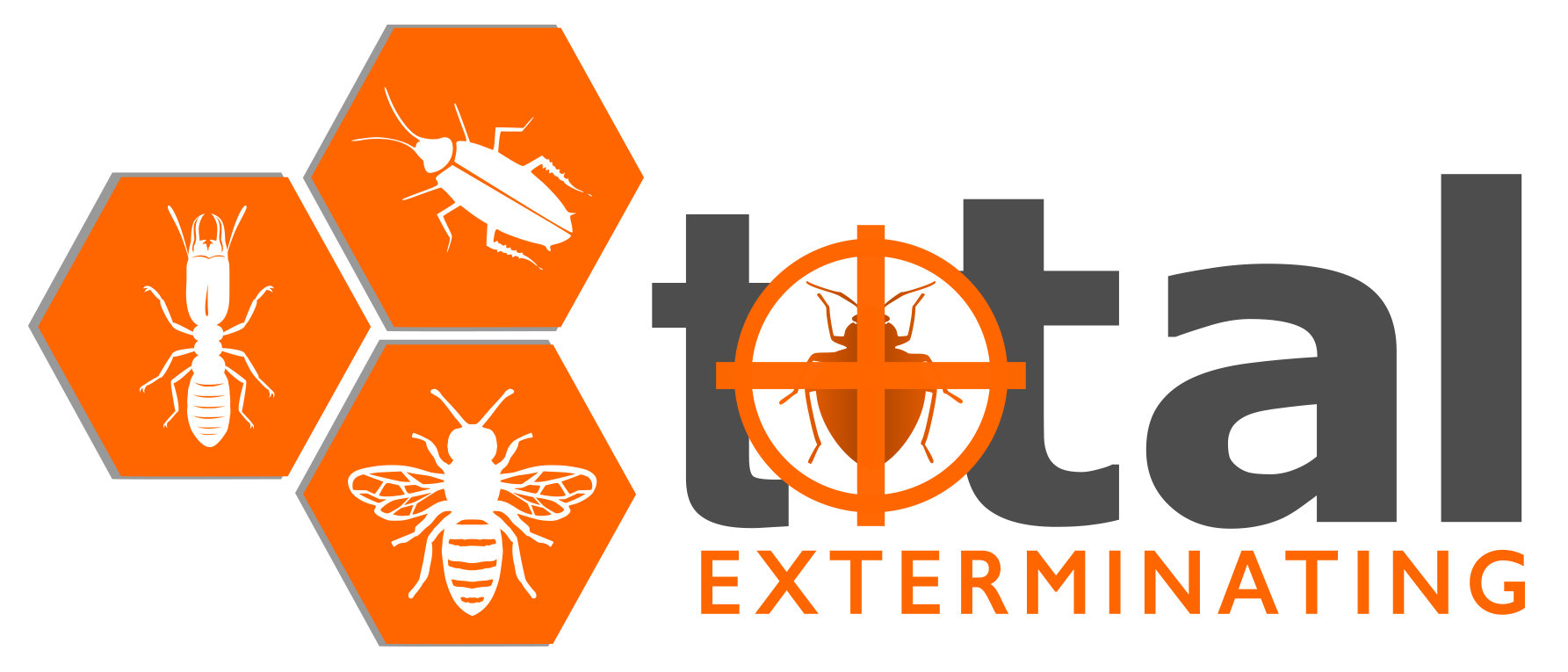
We want to hear from you! If you have any questions, please feel free to send us a message and one of our associates will get back with you as soon as possible.